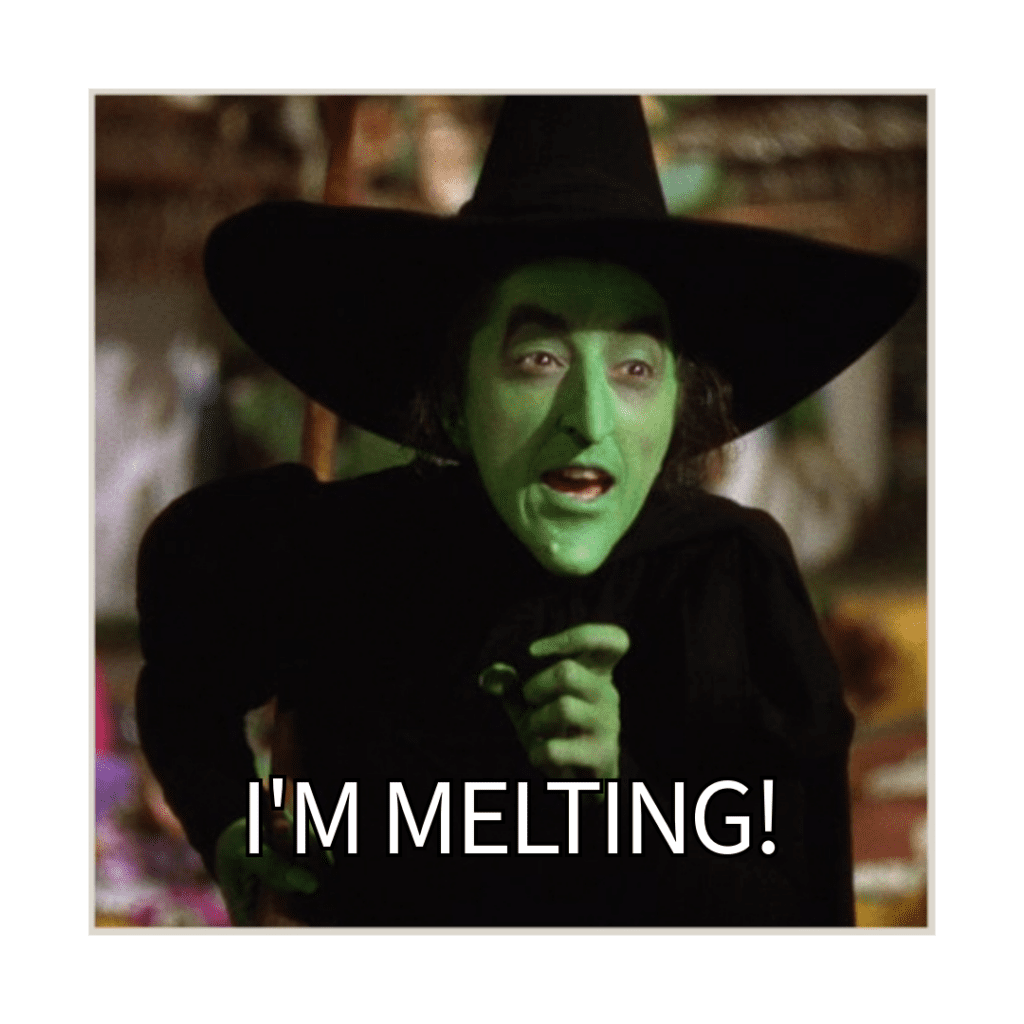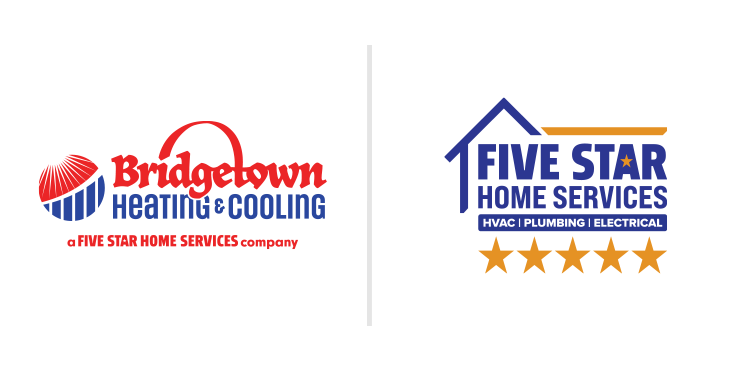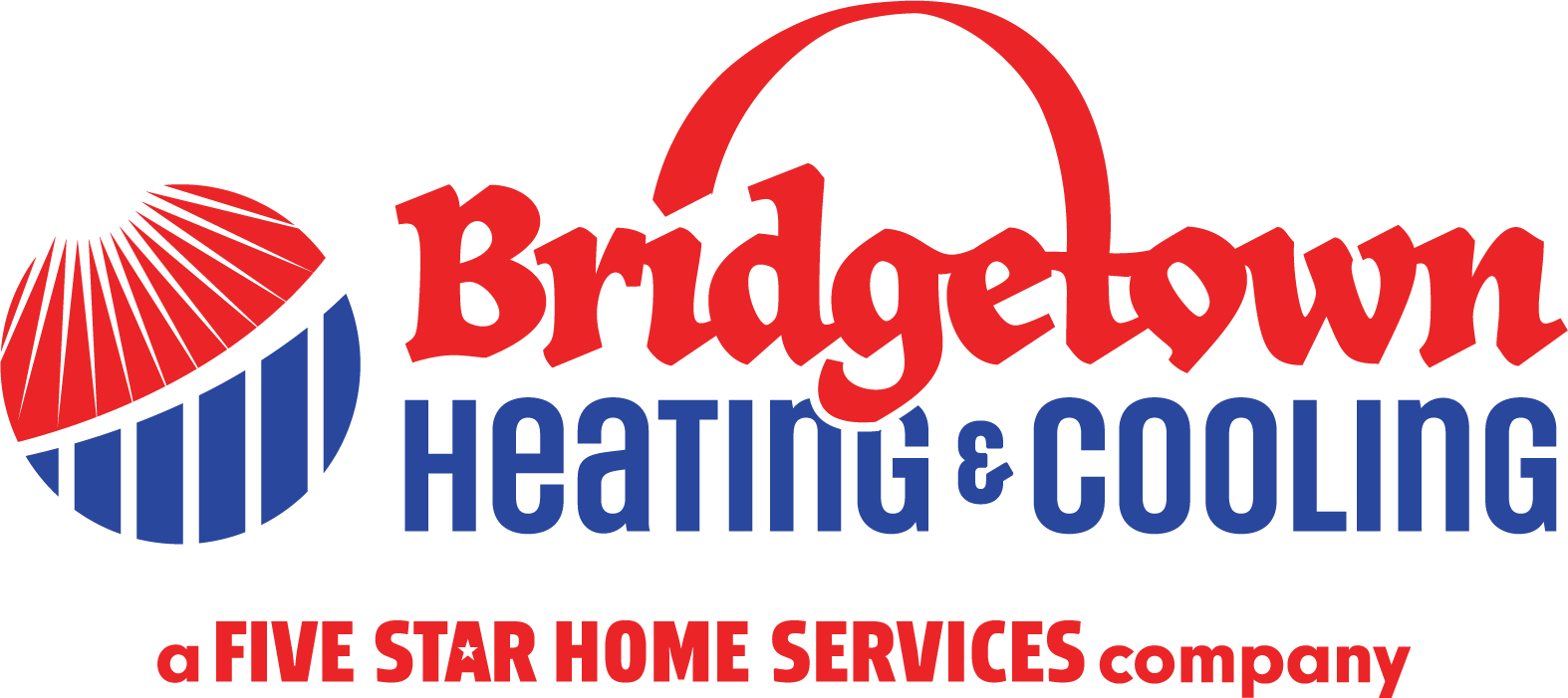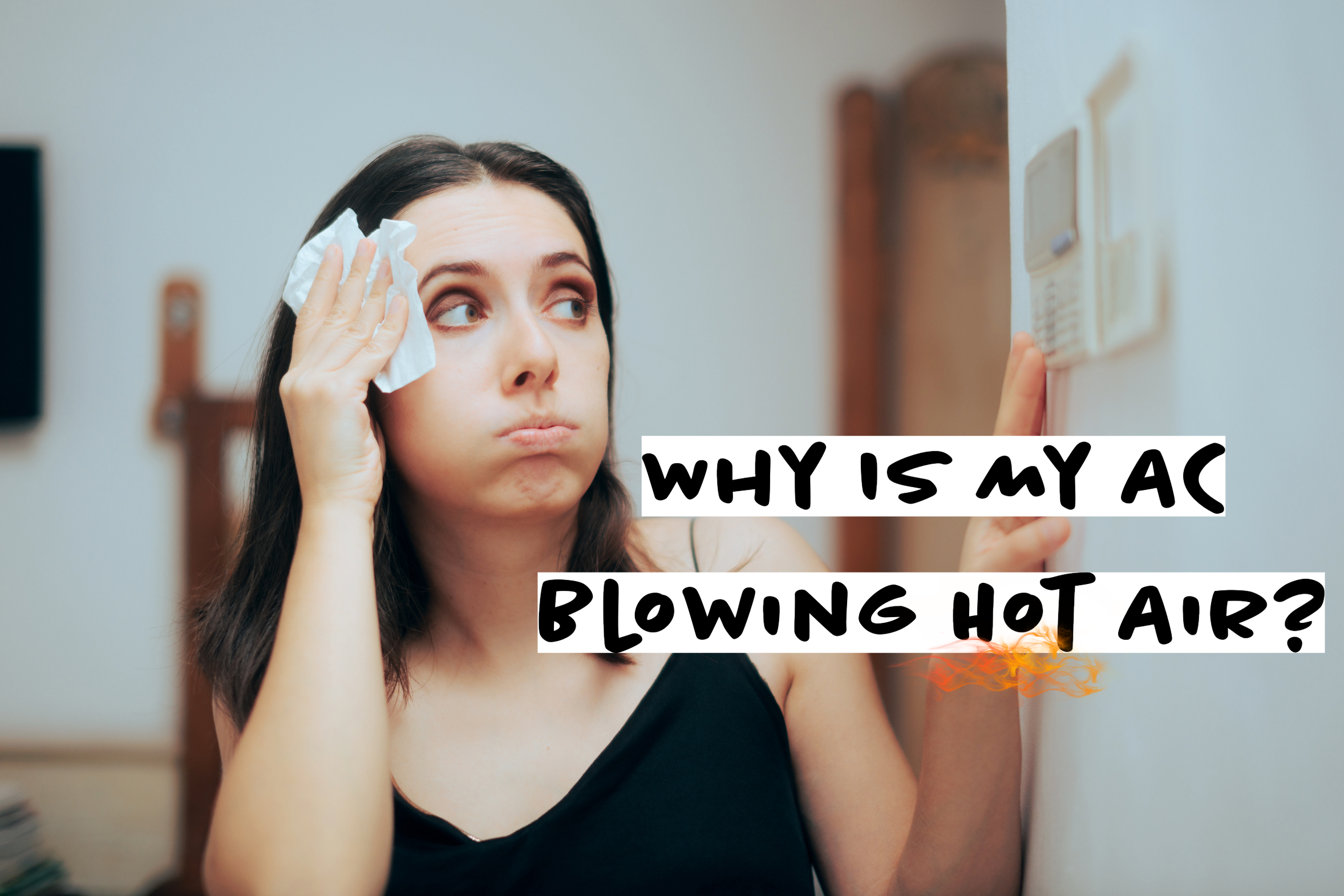It’s really frustrating when you try to turn down the AC temperature on your thermostat only to realize your unit is blowing hot air. Remember, from June to August, Ohio goes through its hottest and wettest months of the year. This means heat and humidity levels are sky-high right now. So, if your air conditioner isn’t doing its job, you might truly feel like you’re melting.

Jokes aside, we understand the importance of getting your air conditioner back up and running. There are quite a few reasons why your AC might not be pumping out cool air, so come hang out with us, your Bridgetown Heating & Cooling family, as we chat about some of the most common reasons your AC might be giving you hot air. Plus, we’ll also show you the best ways to troubleshoot them.
Troubleshoot by:
Inspecting the Thermostat
Let’s take a closer look at the thermostat, the heart of your HVAC system. If the thermostat isn’t working right, it can throw the whole system off kilter. When it malfunctions, it messes up the messages sent to your HVAC, which means your AC might not turn on and off when it should, or work as expected. A lot of times, if something’s up with your system, the thermostat is the culprit. So, if your air conditioner is acting up, giving the thermostat a check might just do the trick.
- First up, could you check if your thermostat is powered on and responding? It might just need new batteries (if applicable).
- Then, double-check that it’s not set to “heat.”
- Lastly, make sure it’s set to “auto,” not “on.”
Inspecting the Breaker
Is your AC turned on? It might be that the breaker switch has tripped. If your unit is blowing out warm air, then this might not be an issue for you. But, it’s always a good idea to give it a check, just in case.
Circuit breakers are often tucked away in quieter spots like the garage, basement, or utility closet. Why not take a look and see if it’s the air conditioner causing a fuss and tripped the breaker? If so, just flick it back to the “on” position. If that fixes things – great! But remember, if it keeps tripping, there might be something else at play. Then it would be a good idea to have an HVAC professional take a peek to sort things out.
Inspecting the Air Filters
A clogged air filter might not seem like a big deal at first, but if you ignore it, those dirty filters can lead to some pretty big problems. When an air filter gets too full of dust and other stuff floating around in the air, it can block the airflow. This can cause a bunch of issues with parts of your system, like the motor, fan, or even the compressor. So, it’s a good idea to keep an eye on it!
Remember to change your air filters every 1-3 months. When they will need changed can vary depending on your filter type, whether you’ve got pets, and how often you use your system. Why not take a moment to check your air filters and see if they need changing? If swapping them out solves the warm air problem – awesome! If not, just move on to the next step below.
Inspecting the Evaporator Coils
When an air filter gets clogged, it can cause dust or loose debris to pile up on the evaporator coil. If the evaporator coils get dirty, they won’t be able to soak up heat from the air like they’re supposed to, messing with the heat exchange needed for the cooling process to happen.
Having trouble? Take a close look at your evaporator coils, and if they look like they need a cleaning, go ahead, but do so carefully. Click here for a step-by-step guide on how to give your evaporator coils a proper clean.
Inspecting the Unit for a Refrigerant Leak
Just like your car’s air conditioner needs coolant to pump out that refreshing cool air, your home’s AC system works the same way. The refrigerant in your AC is the magic behind the heat-cold swap, so if it’s running low (or if there’s a leak), you’ll start feeling warm air instead.
Unless you’re certified in HVAC, you probably can’t legally get your hands on air conditioning refrigerant for your system. It’s best to let a professional handle this troubleshooting step. However, it’s good to stay alert for these clear signs that you might have low or leaking refrigerant:
- If you hear bubbling or hissing sounds even when the AC is off
- If cool air isn’t coming through your vents
- If you spot some ice on the evaporator coils
Inspecting the Condenser (Outside Unit)
Finally, let’s chat about your outdoor unit – the condenser. If the condenser’s coils start collecting dirt, they won’t be as good at pulling that warm air out of your home, which will lead to less cool air flowing through. Bear in mind, letting an issue like this go unchecked can lead to damage to your unit.
So, what do you do if you notice your condenser coils are a bit dirty? Good question! First off, safety is key, so make sure to turn off the power to your unit. Then, with gloves on, gently rinse off the debris using a water hose. You can opt for a softer setting on your hose; something like “shower” or “flat” mode works perfectly. Try to avoid the “spray” mode. Hold the hose steady and start at the bottom of the condenser, slowly working your way up, inch by inch, across the coils from left to right. Take your time and be thorough – rushing could damage your unit. And don’t worry; your HVAC technician can take care of the trickier parts of the condenser during your next tune-up and safety check!
Still dealing with your AC blowing hot air? While there are quite a few troubleshooting steps you can try yourself, sometimes it’s just better to call in the professionals. If your air conditioner is still not cooling, don’t worry—we’ve got you covered! Our technicians are not only NATE-certified but also bring years of experience to the table. And the best part? We’re here for you with emergency services 24/7, all year round.
Get your air conditioning system summer-ready with your friends at Bridgetown Heating & Cooling! Call us today at (513) 273-1335, or schedule an appointment online now by clicking here!






